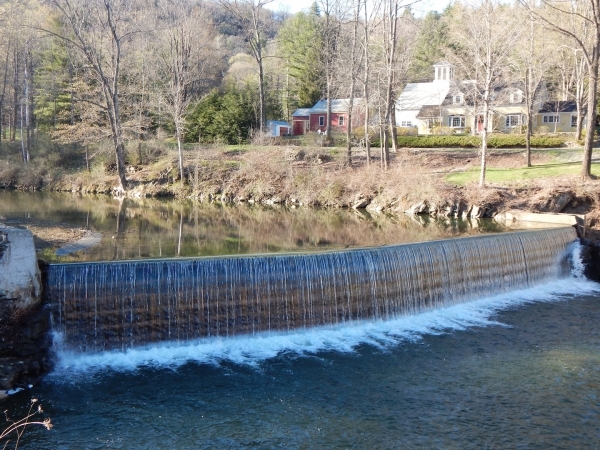GUILFORD — The Green River meanders southward through three towns before crossing Vermont's border with Massachusetts.
Now, there's an effort under way to unite those towns - Marlboro, Halifax, and Guilford - with other regional partners to take a fresh look at issues like flood resiliency, conservation, and restoration.
The campaign might even involve public art and school programs.
What's been dubbed the Green River Watershed Alliance is still in its infancy. But Windham Regional Commission is getting the ball rolling, with the expectation that the local communities will pick it up and run.
“The idea is that our involvement would be a catalyst for the group, and that they would develop into a sustainable watershed group with lasting impacts,” said Emily Davis, a natural resources and water quality planner for the Commission.
The idea for a Green River group stemmed in part from the recent success of another Windham County partnership. The Saxtons River Watershed Collaborative formed in 2015 and included four towns as well as a variety of state and regional entities.
Projects have included the restoration of three damaged riparian sites; holding a workshop for landowners in flood-prone areas; and other educational and planning efforts.
“We want to use [Saxtons River] as a model in certain senses,” Davis said. “Just like every community is unique, every watershed is unique.”
Improving flood resilience
Farther south, the Green River Watershed Alliance concept “leaves a lot of space for the municipalities and the communities to take ownership of it,” Davis said. But she defines the basic idea this way: “Improving flood resilience through social cohesion and watershed identity.”
At this point, Green River goals include:
• Boosting flood resilience.
More than five years after Tropical Storm Irene, flooding is still on many residents' minds: Davis said it has been a common theme in talks with the Green River towns.
She's hoping that a more regional approach will allow local officials to cooperate on larger projects related to flooding.
“That can really make planning efforts among the three towns much more streamlined and much more impactful,” Davis said.
• Improving water quality via ecological restoration and conservation projects.
These could include buffer plantings, water monitoring programs, and conservation easements, with the overall goal being “an improved relationship with the Green River.”
• Creating a watershed identity.
Environmental education and public arts programs are possibilities. Davis said she wants to “highlight the connection between people and place in the watershed, and really celebrate that.”
It will be up to the Green River towns, Davis said, to decide how best to use a new watershed alliance. In preliminary discussions, Windham Regional so far has found a generally enthusiastic response to the idea.
Opportunities for collaboration
Marlboro Selectboard endorsed the concept in March, and Davis said Halifax officials did the same this month.
In Guilford, Conservation Commission Chairwoman Linda Hecker said she's looking forward to the formation of a Green River alliance.
The group may be able to support the commission's work toward a natural resource inventory in Guilford, “starting with our water resources,” Hecker said.
Hecker also is interested in new collaborations. That would include work with neighboring towns and with groups within Guilford such as Vermont Performance Lab, a proposed partner in the alliance.
“We think the collaboration of environmental, cultural, and educational groups will help inform and engage local citizens from many different perspectives,” Hecker said.
The Commission is providing administrative and technical help to get the alliance started. That includes an expected grant application to the Burlington-based High Meadows Fund, which has supported the Saxtons River watershed group.
Davis said landing grant money will be critical to the Green River effort, since “we'd never ask towns to dig into their already tight budgets” to build the alliance.
In fact, she's hoping this will be a way to bring more resources into the watershed. Formation of the alliance “will be used to leverage future funding opportunities to assist the towns with implementing projects identified in their town plans,” Davis said.
